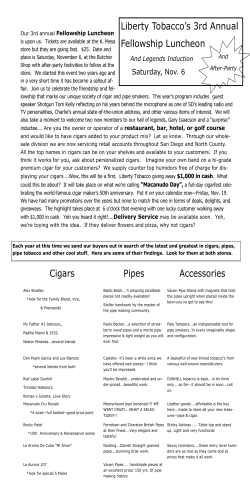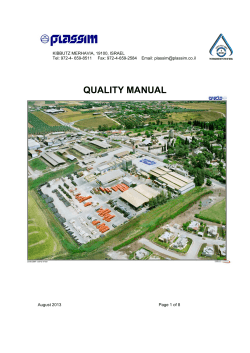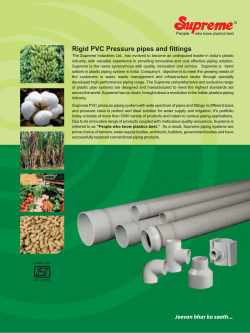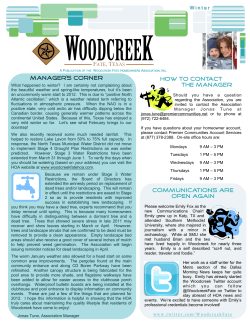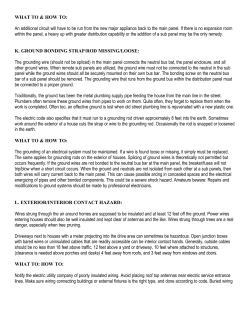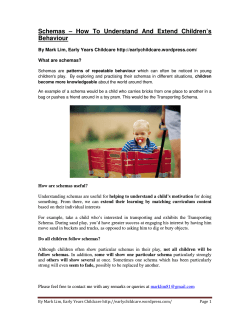
Keeping Your House Operating During A Cold Alaskan Winter O U
Keeping Your House Operating During A Cold Alaskan Winter Overcoming Utility Freezeup Problems EEM-04955 Wintertime in Alaska can be cold with temperatures of forty, fifty, sixty, even seventy below zero. Severe outside temperatures can cause severe inside problems. When utilities stop functioning because of the cold, it is inconvenient and even dangerous. Knowing how to keep utilities functioning or how to restore them to working order during periods of severe cold weather is very important. HEATING SYSTEMS AND COOK STOVES an emergency, piling large volumes of loose snow around the tank can be effective. To ensure cold weather operation, however, enclose the supply system in such a way that additional heat can be provided. A simple heat source is an electric light bulb hung inside an enclosure large enough to allow air circulation around the pipe. Use an electric hair dryer to temporarily warm a section of frozen supply line. However, do not use electric heat tapes on fuel supply lines. Houses have been burned down by such installations. Cold weather problems with fuel-fired appliances, such as heating and cooking stoves, are usually caused by inadequate fuel flow or blocked ventilation. Fuel flow problems can occur even with gas-fired appliances. Ventilation blockage happens either at the exhaust (chimney) side of the system or at the air-intake side. Buried supply pipes will be warmer, even in frozen ground, than those exposed to severely cold air. However, the lower level of a buried pipe can interfere with gravity feed of the fuel. Also, water or condensation collects at the lowest point in the system, so a buried pipe could become an inaccessible point of frozen water blockage. Oil-fired Furnaces, Stoves and Water Heaters At temperatures of twenty above and colder, #2 diesel oil begins to congeal, preventing it from flowing properly. Even #1 diesel (heating oil) stops flowing adequately at around minus sixty degrees. Some people mix these two grades of oil in their supply tanks so their fuel will flow during cold weather. While this a good idea, it does not guarantee adequate fuel flow when the temperature plummets. A much better precaution is to buy only #1 oil if you don’t have a way to keep your storage tank warm. Shelter and insulate the fuel tank and especially the fuel supply pipe. Enclosing, insulating, or in Filters should be installed on all fuel oil tanks. They capture not only dirt but water and condensation too. They must be maintained and drained periodically. Drain the water out of the filter until oil begins flowing out. Keep the supply tank as full as possible. Space in above-ground tanks generates condensation and results in water in the fuel. Commercial diesel fuel additives that lower the congealing point of stove oil are available. These additives work only when the oil is liquid and only if they are agitated into the oil. Therefore, the practical time to add them is at the time the oil tank is filled. Sheltering and heating the fuel storage tank is the best way to prevent freezeup of your oil supply. Chimneys and air-intake vents CAUTION! Air-intake or combustion exhaust blockage can cause malfunctioning in an oil or gas fired heater in cold weather. All chimneys and flues that exhaust combustion gases from fuel-heating devices can be blocked by frozen condensation. The exhaust gases contain water that is vaporized by the fire and carried out in the smoke. These gasses get so cold while exiting through the flue that the water vapor in them changes to water, collects on the chimney, and freezes. Do not use open-flame heat sources like gas lanterns, charcoal burners, or kerosene heaters for warming frozen fuel supply lines. Such devices can ignite leaking or clinging oil and cause a house fire. To prevent chimney condensation problems, install insulated stove pipes for chimneys on any type of furnace or heater. Wood stove owners should burn only well dried wood. Check your chimney during periods of extreme cold and remove condensation ice. However, if you do decide to use diesel fuel additives, be sure to consult your supplier so that you get the right product for your particular fuel. If the fuel stops flowing during a cold spell, the problem can sometimes be solved by taking the filter cartridge out of the filter unit. Slight congealing at the small filter pores can stop fuel flow. Likewise a larger diameter pipe for the outside segment of the supply line allows fuel to flow at lower temperatures than through small tubing. Some heating units have air-intake and combustion-exhaust pipes that end near one another outside the house. On some of these units, the warm exhaust air passing near the cold-air-intakepipe condenses and freezes during extreme cold. If your heater is designed this way and begins to malfunction during severe cold, check and remove any blockage. An electric hair dryer is useful. On some installations, hot water can be poured over the outside intake pipe to melt the frost block. To maintain an ice free intake vent pipe, wrap it with thermostatically controlled electric heat tape, if the pipe is accessible. (See boxes on page 7 and 8.) Another solution to this problem is to install the fuel filter inside the warm part of the house. A tank of stove oil can be warmed up by enclosing in a “tent” of clear construction plastic so that the sun’s rays are captured inside it. This may temporarily solve the flow problem. Some people keep a container of heating oil separate from their main supply. If necessary, the container can be moved inside and connected to the furnace or stove. However, this increases the chance of house fire because fuel can leak or spill and be ignited inside the house. Clean chimneys with properly sized chimney brushes. This is especially important if the blockage is at the top, because the condensation may be building up in other parts of the chimney as well. Rain caps on chimneys increase the potential for frost blocks because the rain cap provides more cold surface for the frost to collect on. Therefore, if you have a problem with frost blockage, it is a good idea to temporarily remove the rain cap. CAUTION! In areas of Alaska where winters are typically very cold, it is common to see ladders left in place on the roof, making it much easier to get to a problem chimney when there is snow build up and extreme temperatures. Never use "Heet" type water separators in heating oil! Gasoline additives can cause your furnace or stove to explode! 2 PROPANE AND OTHER GAS-FIRED APPLIANCES WOOD AND COAL STOVES Since wood and coal can not freeze, it is nice to have a wood or coal stove backup in cold climates if one of these fuels is available. If you do have to switch because of the cold, don’t assume that all parts of the house will be as warm as the regular system. Baseboard and forced-air heating systems often provide heat to areas where water pipes and other utilities are located; a wood or coal stove may not prevent freeze-up in those areas. Thermostatically controlled heat tapes applied to isolated pipes may prevent freezing if the electricity is working. Propane fueled appliances can stop working because of extreme cold. Liquid propane boils (changes into gas) at minus forty-four degrees Fahrenheit and liquifies at the same temperature. When the contents of a propane storage tank reach that temperature, gas cannot get to your appliances. The propane has changed to liquid. There are a number of steps which you can take to cold-weather protect propane systems: Sheltering and insulating the propane tank and line is the most practical approach to prevent propane freezeup.To beat even the coldest weather, install an explosion proof light that can be turned on when needed for heat. A small, insulated frame shelter is adequate. Heat stripping can also be used. A commercial product similar to electric heat tapes, but designed for propane tanks, is also available. Wood heating systems must be properly installed and maintained. House fires can happen during the coldest weather, which is when people burn their stoves the hottest. Back-up stoves may not have been properly maintained, adding to the need for caution. Wood burning releases creosote in the smoke that condenses in the stove pipe. This creosote buildup is flammable and can cause very dangerous stack fires. The stove pipe must be regularly cleaned with a chimney brush. Loose snow piled all around the propane tank often proves to be an effective insulation. If you have a permanent bulk propane tank, bury it to protect its contents from periods of severely cold weather. ELECTRIC HEAT Unless you have your own standby generator, you can do little about a cutoff of electricity other than make use of alternate heat sources. If you do not have a wood–, oil-, or gas-fired alternative, seek substitute shelter. But before you leave, do whatever you can to protect your home from the cold that will overtake it if the electricity is not restored soon. Refer to the section “Protecting an Unheated House.” To prevent propane regulator and line freeze up, insulate the system. See the suggestions for sheltering and insulating oil fired supply systems, above. CAUTION! WATER PIPES Frozen gas appliances with pilot lights must be relighted manually. Preventing water system freeze up There are several ways to prevent water system freeze up: Close all gas appliance valves after unsuccessful attempts at lighting the unit. Otherwise, when the outside temperature eventually warms up, the gas will flow again, build up inside the house, and cause an explosion and fire. • Enclose and insulate any pipes under or outside the house. • When installing pipes or replacing them, consider installing plastic pipes (polybutylene) specifically designed to withstand freezing without bursting. 3 zen pipes sometimes works. Of course, more time must be allowed than if the pipes are directly accessible. CAUTION! DO NOT allow water from dripping faucets to go down the drain. Such slow running water can freeze and block your drain pipe under the house or in the ground. Instead, catch the dripping water in pans or buckets and pour the captured water down the drain in larger quantities that rush through the pipes. • If you are unsure where the pipe is frozen, begin by trying to run all water taps. If some taps work and others don’t, you have narrowed your search. If no water runs, then chances are the main line is frozen, perhaps where it enters the house through a wall. Determine which part of the frozen line is most exposed to the cold and begin remedies there. • Install electric heat tapes on pipes outside the heating zone. Besides the pipes under the house, those inside cupboards or behind paneling and sheetrock are also probable freezing points during severe cold spells. (See boxes on pages 7 and 8.) • When you are thawing pipes, even by simply rewarming a cold house, stay in the house and watch the pipes carefully. If a frozen pipe has been cracked by the expanded ice in it, it will gush water through the crack when it thaws. If this happens, shut off the main supply valve immediately. • If pipes are located in or behind cupboards, leave the cupboard doors open so that room heat can reach them better. Cutting vent holes in baseboards or wallboards may be helpful, but be careful not to damage the vapor barrier. CAUTION! Do not leave these heating devices unattended. The intense heating can start house fires. • Allowing a small quantity of water to continually move through the pipes usually prevents freezeup. Opening taps just enough to cause them to drip fast is another freeze prevention technique. DRAIN PIPES Thawing frozen pipes Because properly installed drain pipes do not have water standing in them and are usually connected to a septic system that generates sewer gas, drain pipes need less external protection than water supply pipes. But they can freeze. If they do, they can create great inconvenience. • Electric hair dryers are usually very effective for thawing frozen pipes. Flame torches can be used on copper and iron pipes, but be very careful. This method has started some devastating house fires. The sewer gas trap for most bathtub and shower drains is under the floor of the house. If this space is unheated, standing water in the trap will freeze. Some people solve this problem by pouring hot water into the trap before bathing. Another more reliable technique is to wrap an electric heat tape around the trap. (See boxes on page 7 and 8.) • Locate the main water supply valve so you can shut it off if pipes that have broken by freezing start to leak. • Sponges or rags dipped in hot water and repeatedly applied to the frozen pipe can thaw accessible pipes. To prevent drain freezeup, do not let water drip into the drains. Slow moving and small quantities of water freeze when coming in contact with very cold sections of a drain system. As additional slow dripping runoff reaches that point, it freezes • Directing heat from a hair dryer or electric space heater toward the wall that contains fro4 • Turn off the water supply at the main valve. on top; the pipe will eventually be blocked by this “glacier” within. Water which dams up behind the glacier will also freeze, causing a very big problem. • Drain the pipes by opening the valves and disconnecting the pipes at their lowest points. Remember, out-of-sight pipes with heat tapes will have no protection if the electricity is shut off. Enclosing and insulating the area under the house where drain pipes are located is highly recommended. • Drain the water pump pressure tank or other water storage tank. Heat tapes work well on drain pipes if installed following manufacturer’s instructions. Thermostatically regulated tapes save electricity because they automatically turn on and off according to temperature. Putting on heat tapes, even after the pipes are frozen, can help thaw the pipes if the block is above ground. (See boxes on page 7 and 8.) • Turn off the fuel or power to hot water heaters even if the outside electricity is already interrupted. With electric water heaters, this prevents the elements in the empty water heater from burning out when the electricity comes back on. Turn off the fuel valve on gas- and oil-fired heaters to prevent unwanted buildup of fuel in the water heater and the building. The first elbow under the soil is a probable freeze point, especially for slow moving drain water. To thaw the area, excavate as much dirt as possible around the vertical or sloping pipe that enters the soil and set an electric heater next to the section. An alternative is to pour plenty of hot water over the section of excavated pipe. • Drain the hot water heater. • To cut off outside electrical power, turn off the main switch. If you are gone when the power is restored, electrical appliances will not be subjected to uneven surges of power. Water pipes that do freeze may crack; when heat is restored the ice will melt and the water will leak into your house. Any area where vehicular traffic passes over the ground above a buried pipe is another point susceptible to freezing. The earth is compacted, allowing greater penetration of the cold in that area. Sometimes the compacted soil above the pipe causes the pipe to sink a bit. The area sags, collects water, and freezes. • Use antifreeze (preferably a propylene glycol or other non-toxic antifreeze) to replace standing water in sink, tub and toilet traps. If all else fails, a frozen drain system can be thawed with a steam hose from a steam cleaner or other boiler. Remove the cleanout plug and insert the steam hose. It can be messy, especially under a house. Consider digging a sump hole near the cleanout plug so that overflow has a low place to go and that you won’t be lying in while directing the steam hose. PROTECTING AN UNHEATED HOUSE If you must temporarily leave your house because of the cold weather, or if your house will be unoccupied and unheated during cold weather, you must take steps to protect your house. Flush the toilet after the water supply is turned off to remove as much water as possible from the toilet tank. Water in the bottom of the toilet (trap) can be removed by using a toilet brush to push it through to the drain pipe. Then pour antifreeze into the toilet trap, filling to its normal level. Displace and replace the standing water in sink and tub drains by pouring in about one pint of antifreeze. • Consider removing items from the house which may be damaged by freezing. Canned goods are normally not hurt by freezing. However, jars of preserved foods might break if frozen. • Notify all utility providers: water, electricity, gas, honey-bucket service, etc. 5 TYPES OF HEAT TAPES Various types of heat tapes are available for different purposes. Consult your service representative for the proper type for your purpose. On at all times • Heats when plugged in regardless of the temperature • Good for regularly monitored pipes • Manufacturer recommend use only on metal pipes Temperature regulated • Has a built-in thermostat • Turns on or off when it reaches a pre-set temperature • Works well in places difficult to reach or check • Most economical Self Regulating • Increases electrical flow to the tape as the pipe gets colder • Decreases flow as pipe gets warmer • Never off • Continues to use electricity as long as it is plugged in Propane • Specifically made for propane tanks 6 The following contains advice on the use of electric heat tapes. These can cause fires if installed improperly. Please read the following consumer product safety commission alert, if you are planning to use heat tapes on your water lines. CONSUMER PRODUCT SAFETY ALERT From The U.S. Consumer Product Safety Commission, Washington, D.C. 20207 ELECTRIC HEAT TAPES MAY CAUSE FIRES • Install only as instructed. • Some heat tapes must not overlap or touch themselves, unless specifically permitted in the manufacturer’s instructions. • Replace if electrical insulation is damaged or deteriorated. Electric heat tapes are used by thousands of homeowners (especially mobile homeowners) to protect their water pipes from freezing. Yet, if improperly installed or maintained, heat tapes could go beyond keeping your pipes warm; they could burn your house down. If you are purchasing heat tapes CPSC offers the following safety tips. • Buy the proper tape for the proper pipe. Know the diameter and length of the pipe to be protected, then buy the heat tape recommended for that size by the manufacturer. (Some heat tape can be cut to fit the length of the pipe.) A heat tape (also known as a pipe heating cable) consists of two wires enclosed in plastic insulation. When plugged into an outlet, it emits heat from electrical current passing through the cable. Heat tapes are usually installed in crawl spaces and in the sub-structure of mobile homes and other dwellings where exposed water and drain pipes could freeze during the winter. The products are often plugged in year-round and are activated by a thermostat when the outdoor temperature approaches freezing. • Buy heat tape that meets voluntary standards and is listed by a nationally-recognized laboratory such as UL. • Follow the manufacturer’s instructions for installing heat tape. Heat tape should not be lapped over itself around the pipe unless specifically permitted in the manufacturer s instructions. • Wrap the heat tape directly over the pipe to be protected, never on top of the thermal insulation covering a pipe. The U .S. Consumer Product Safety Commission (CPSC) estimates there are 2,600 fires each year involving heat tapes. These fires result in an estimated 20 deaths, 110 injuries and $24.8 million in property loss. Fires often occur because of improper installation by consumers. For example, a heat tape that is wrapped over itself or used near flammable material can lead to fire. • Don’t cover the heat tape with insulating materials unless so advised by the manufacturer. If you insulate the tape, it must be a nonflammable insulating material such as fibrous glass. • Never use more insulation than recommended by the manufacturer. Over-insulation can cause a fire. CPSC urges consumers to inspect their heat tape annually. If there is any damaged or cracked insulation or bare wires the old heat tape should be replaced immediately. 7 To simplify information, trade names of products have been used. No endorsement of named products by the University of Alaska Fairbanks Cooperative Extension Service is intended, nor is criticism implied of similar products that are not mentioned. www.uaf.edu/ces or 1-877-520-5211 Roxie Rodgers Dinstel, Extension Faculty, Health, Home and Family Development. Published by the University of Alaska Fairbanks Cooperative Extension Service in cooperation with the United States Department of Agriculture. The University of Alaska Fairbanks is an affirmative action/equal opportunity employer and educational institution. ©2013 University of Alaska Fairbanks. 1-90/FM/7-13 Reviewed June 2011
© Copyright 2026

